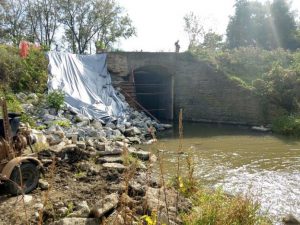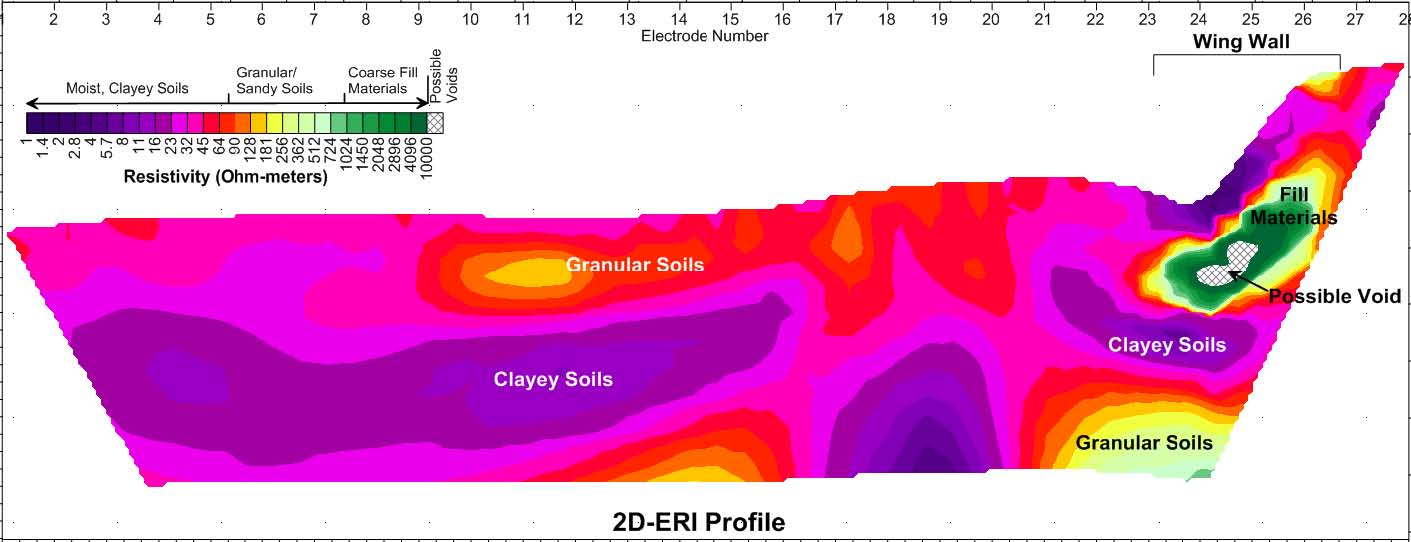Challenge
A wing wall failure at the Six Mile Creek Aqueduct on the Miami and Erie Canal in Auglaize County, Ohio prompted concern for the integrity of the remaining structure and required remedial efforts to correct the failure to preserve the historic aqueduct. The nature of the wing wall failure and observed seepage through the aqueduct foundation materials indicated that water may be flowing through voids in the foundation material, potentially resulting in further erosional damage to the remaining aqueduct foundation. The purpose of the study was to assist in evaluating material anomalies, voids, subsidence and/or groundwater in the backfill areas of the abutment and wing walls for enhanced remediation planning.
Action
Based on the project objectives, terrain conductivity and electrical resistivity imaging (ERI) were recommended to characterize zones of higher permeability including granular zones and anomalies in foundation materials present at the site. Additionally, a high-resolution ground penetrating radar (GPR) survey was recommended to image the remaining wing wall and abutment structures for potential voids.
Results
The results of the terrain conductivity and ERI results were consistent with each other and indicated the presence of coarse-grained, granular fill material with potential void spaces within the embankment behind the stone block abutment and wing walls. The GPR survey results also indicated the likely presence of significant void development behind the remaining abutment and wing wall structures. The findings of this study were used to inform remedial efforts, which ultimately led to a successful repair of the Aqueduct’s failed wing wall structure.





